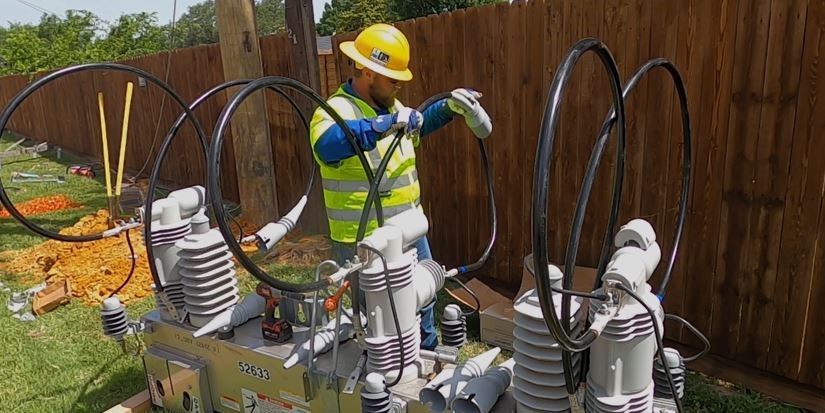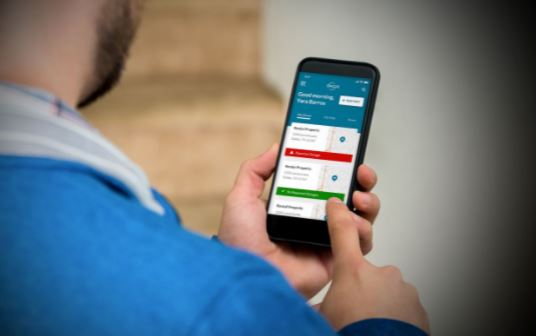-
Contact Us
-
General Inquiries/Service Requests:
- 888.313.6862
-
contactcenter@oncor.com
-
(Mon.-Fri., 8 a.m.-6 p.m. Central Time)
-
For Outages
- 888.313.4747
-
(24/7)
Oncor has long used helicopters and small airplanes to fly and hover over and inspect its transmission lines. To that squadron, you can now add a fleet of high tech, portable drones.
Less than a year old, Oncor’s drone program already boasts 25 aircraft and 35 employees certified to fly them.
“We have used contracted drone services for scheduled inspections and construction activities for several years, and we first tried drones for some storm recovery in 2018,” said Peter Babcock, Senior Manager, Transmission Equipment Support. The company soon realized the benefits of being able to fly over and around damaged equipment.
A drone gives us a better vantage point -- the ability to inspect damage to areas that are out of sight or out of reach,” Babcock said. “Many times following storm activity, our transmission rights-of-way may be flooded or otherwise inaccessible and that could significantly delay us in finding and assessing storm damage.”
And it’s not just for storm damage. Oncor is using drones for scheduled inspections too. “Before, we had boots on the ground,” Babcock said. “The drone gets you up above it and closer to it.”
Babcock, along with Patrick Prevost, Senior Engineer, Transmission Equipment Support, launched the company’s official drone effort in mid-2019. Babcock now heads the initiative.
The two, both electrical engineers, first looked at how other utilities were using drones. “We wanted to get a better feel for what everybody is doing and how it would fit into our plans,” Babcock said.
The pair worked with the Unmanned Safety Institute (USI) for help in drafting operating procedures and requirements to use drones to inspect Oncor’s facilities. As with everything at Oncor, safe operations is paramount.
Around the same time, Oncor bought its first drone, a DJI Mavic 2 Zoom. Prevost calls it “001.” All of our drones are registered with the Federal Aviation Administration and have a Federal Aviation number.
Prevost keeps 001 stowed in a black plastic carrying case that’s about school lunch box size, but twice as thick. The drone nests inside, its propeller arms folded up.
On 001’s underside is a high-definition, 4K camera. It transmits what it sees to a four-inch screen on the handheld console that Prevost uses to control the drone. All the video is stored onto an SD card for better, closer viewing later on a laptop.
For Oncor, drones look for things like broken insulators and damaged lines and cross arms on poles. They can hover above a construction project or over a right of way.
Since buying 001, Oncor has added two dozen more identical drones and trained over 30 employees to fly them. The team decided to have at least one certified drone pilot in each of Oncor’s 20 service centers.
“Everyone went through classroom training and took an exam,” Prevost said. “We did some hands-on training. A handful had a drone and knew how to fly one. And there were several who had never touched one before.”
Babcock believes the sky is the limit for drones at Oncor.
He anticipates the current program will grow and Oncor’s fleet enhanced with other models. Oncor could outfit some drones with infrared cameras or ones that can capture a corona, a partial electrical discharge in high-voltage systems.
On the horizon, Oncor could program drones to automatically fly a predetermined course and use artificial intelligence to assess damages.
After tornadoes hit Dallas in October, Prevost and others used drones to inspect aerial distribution lines and equipment.

“You’ve got distribution lines behind houses and you can inspect them much easier with a drone,” he said. “After the storm, we had someone who would put in work orders right from the field just after we found things with the drone, which can significantly enhance our restoration time.”








